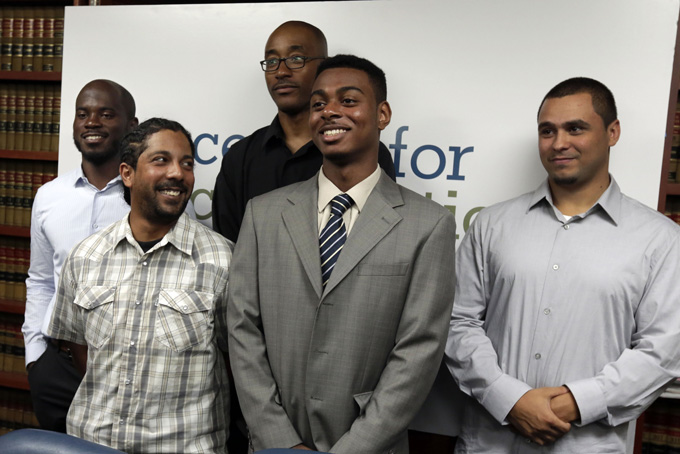
SILENT MARCH–In this June 17, 2012 photo, demonstrators hold signs during a silent march in New York to end the New York City Police Department’s “stop-and-frisk” program. (AP Photo/Seth Wenig, File)
by Colleen Long
Associated Press Writer
NEW YORK (AP) — The New York Police Department’s practice of stopping, questioning and frisking people on the street is facing its biggest legal challenge this week with a federal civil rights trial on whether the tactic unfairly targets minorities.
Police have made about 5 million stops of New Yorkers in the past decade, mostlyBlack and Hispanic men. The trial, set to begin Monday, will include testimony from a dozen people who say they were targeted because of their race and from police whistleblowers who say they were forced into making slipshod stops by bosses who were too focused on numbers.
“When we say stop, question and frisk, we’re not talking about a brief inconvenience on the way to work or school,” said Darius Charney of the Center for Constitutional Rights, the lead attorney on the case. “We’re talking about a frightening, humiliating experience that has happened to many folks.”
U.S. District Court Judge Shira Scheindlin, who has said in earlier rulings that she is deeply concerned about stop and frisk, is not being asked to ban the tactic, since it has been found to be legal. But she does have the power to order reforms, which could bring major changes to how the nation’s largest police force and other departments use the tactic.
Street stops have become a New York flashpoint, with mass demonstrations, City Council hearings and, most recently, days of protests after police shot a teenager who authorities say pulled out a gun during a stop.
New York Mayor Michael Bloomberg and Police Commissioner Raymond Kelly say it is a necessary, life-saving, crime-fighting tool that helps keep illegal guns off the street and has helped New York reach all-time crime lows.
It’s an issue outside of New York. Philadelphia settled a civil rights lawsuit last year over its stop-and-frisk program by agreeing to court monitoring, and San Francisco Mayor Ed Lee backed off plans to adopt stop and frisk after weeks of criticism last summer.
A 1968 Supreme Court decision established the benchmark of “reasonable suspicion” — a standard that is lower than the “probable cause” needed to justify an arrest.
Street stops increased substantially in New York in the mid-1990s, when, faced with overwhelming crime, then-Mayor Rudy Giuliani made stop and frisk an integral part of the city’s law enforcement, relying on the “broken windows” theory that targeting low-level offenses helps prevent bigger ones.
Stops rose and overall crime dropped dramatically in a city that once had the highest murder rate in the U.S.